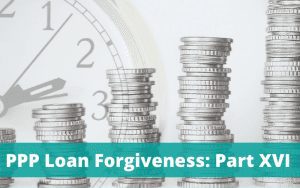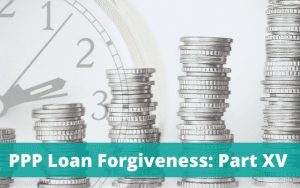Part TWO: The CARES Act, Net Operating Losses, and Cash Flow
So much has happened this year and so much has to be done before the year end to help our clients make the correct decisions on their tax liabilities that we are starting our planning now, and we hope you will too.
Most, but not all, of what we are recommending is related to the changes in the laws caused by the pandemic. We know there are lots of questions, but to get the best out of the new tax requirements, there’s no other way to put it: It takes planning.
NOTE: We are on Part Two. Please click HERE for Part One.
Part One: The pandemic, the election, and technology.
Part Two: The CARES Act, Net Operating Losses, and Cash Flow
Part Three: PPP Loans, Required Minimum Distributions, and 401(k)s
PART TWO
The CARES Act
As a reminder, CARES stands for Coronavirus Aid, Relief, and Economic Security. With it came some much-needed new laws. According to NPR’s Kelsey Snell, “The spending primarily includes $300 billion in one-time cash payments to individual Americans, $260 billion in increased unemployment benefits, the creation of the Paycheck Protection Program that provides forgivable loans to small businesses with an initial $350 billion in funding (later increased to $669 billion by subsequent legislation), $500 billion in aid for large corporations, and $339.8 billion to state and local governments.” That was back in March. Here in October 2020, we are seeing daily changes in these laws, and we will make sure to keep our clients up to date and in compliance as they unfold.
One of the modifications in the CARES Act related to Net Operating Losses (NOLs). How does this relate to tax planning? If we can see that our clients will have a NOL for 2020, and can get their taxes filed early in 2021, we can go back and quickly claim those carrybacks against previously reported income to obtain the much-needed cash. We’ll explain.
Net Operating Loss
A Net Operating Loss is a loss in which an entity’s tax deductions exceed its taxable income in a given period. If the entity is a C corporation, the NOL is realized on the C corporation tax return. If the entity is a passthrough entity, like a partnership or S corporation, the NOL is realized on the individual owner’s tax return. Prior to the CARES Act, NOLs were not permitted to be carried back to offset prior year income. Instead they were carried forward indefinitely to offset future income. In addition, the carry forward was limited to 80% of taxable income. The CARES Act provided a five-year carryback for losses incurred in 2018, 2019, and 2020. Also, it suspended the NOL limit of 80% of taxable income. Lastly, pass through business owners may use NOLs to offset non-business income above the previous limit of $250,000 (filing status single) or $500,000 (married filing jointly).
If a business is in a loss position, we may want to try and maximize that loss for the current year by accelerating deductions into 2020, and deferring income into 2021. This can be done through effective tax planning. A business can apply that loss to a previous tax period and retrieve previously paid taxes after it files its 2020 tax return. This could lead to an influx of much needed cash in the form of tax refunds. The IRS even provides a procedure for an expedited refund by filing either Form 1139 (Corporation Application for Tentative Refund) for C corporations or Form 1145 (Application for Tentative Refund) for individuals.
A year of no income? It sounds awful but there is a silver lining if you consider that with no income, you have to pay ZERO taxes! Even better, if there is a loss, a taxpayer can get a refund for taxes paid in previous years. Example: If an entity has a one hundred thousand dollar loss in the current year and applies it to income of one hundred thousand dollars in a previous year, they would be entitled to the taxes they paid on the $100,000. So, they get all (!) that tax money back.
Cash Flow and Tax Planning
For year-end 2020, what does cash flow planning look like in a pandemic environment and how does that impact tax planning? We recommend that our clients have contingencies in place in case we go through another shutdown. As an example, clients may not choose to pay all their taxes by year end. They may elect to hang on to some of that money in the event of another lockdown/shutdown if they think they may need the cash to survive.
If that were the case, they would have to pay their taxes, interest, and penalties. However, cash reserves are essential, and paying interest and penalties beats shutting the doors on your business for good.
Our Recommendation:
The CARES Act, Net Operating Losses, and Cash Flow are all critical aspects of year-end tax planning. But the pandemic related tax-laws are changing daily. Each company has specific applications of these laws to their businesses. We recommend engaging CPAs who work tirelessly to keep abreast of the changes as they occur—like LSL CPAs.
Please contact us you have questions.




